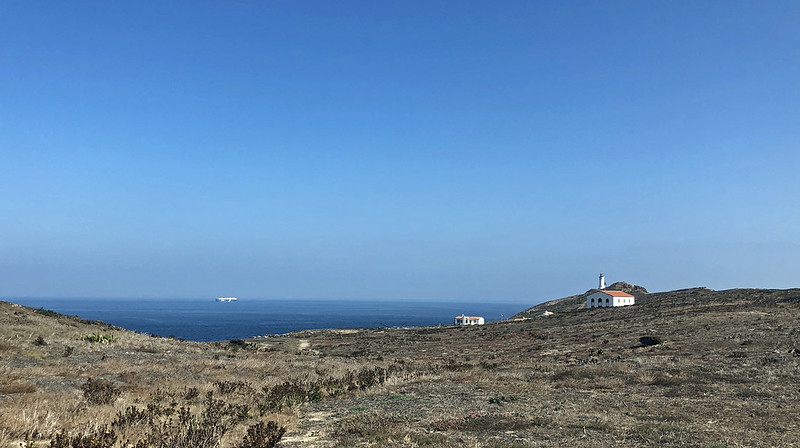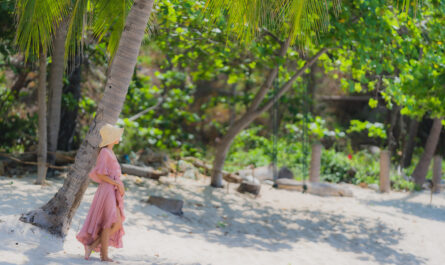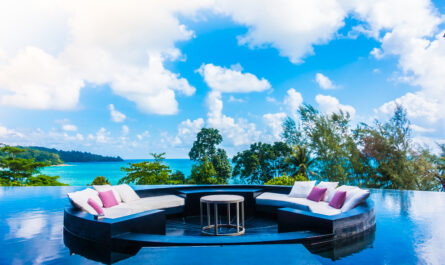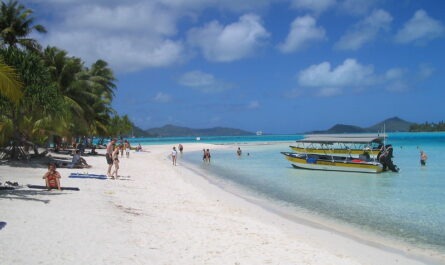The Pacific Islands are celebrated for their breathtaking landscapes, pristine beaches, rich biodiversity, and vibrant cultures. But as more people are drawn to these beautiful islands, the impact of tourism on fragile ecosystems and local communities becomes increasingly significant. Sustainable travel offers a way to explore these destinations responsibly, ensuring that future generations can continue to enjoy the Pacific’s unique treasures.
Whether you’re planning a relaxing beach getaway, a cultural immersion, or an adventurous exploration of the Pacific’s natural wonders, this guide will help you make eco-friendly choices that benefit both the environment and the communities you visit. Here are essential sustainable travel tips to consider when exploring the Pacific Islands.
1. Plan Your Trip During Off-Peak Seasons
Traveling during the off-peak season not only helps you avoid large crowds but also reduces the strain on local resources. In many Pacific Islands, the peak tourist season is during the dry months (typically June to September). By visiting during the shoulder seasons (May or October) or even in the off-peak rainy season, you can enjoy a quieter experience and contribute to a more balanced distribution of visitors.
Eco-Benefit: Traveling during less crowded months helps decrease the environmental load on local resources, such as water, energy, and waste management, which can be stretched thin during peak times.
2. Choose Eco-Friendly Accommodations
Many Pacific Island resorts and hotels are becoming increasingly eco-conscious, incorporating sustainable practices to minimize their environmental footprint. Look for accommodations that use renewable energy sources, practice water conservation, and engage in local environmental efforts.
Tips for Choosing Green Accommodations:
- Check for Green Certifications: Look for certifications such as EarthCheck, Green Key, or certifications specific to eco-friendly practices in the Pacific region.
- Read Reviews: Look at reviews and descriptions on sites like EcoHotels, which highlight accommodations with proven eco-friendly practices.
- Support Locally-Owned Lodgings: Choose locally-owned hotels or guesthouses to contribute directly to the local economy, ensuring your money supports the island community.
3. Pack Light and Mindfully
Packing light reduces the overall weight on transportation vehicles, contributing to lower fuel consumption. Additionally, packing eco-friendly items helps you maintain sustainable practices during your travels.
Eco-Packing Tips:
- Bring Reusable Items: Reusable water bottles, bamboo utensils, and cloth shopping bags can help you avoid single-use plastics during your trip.
- Choose Biodegradable Toiletries: Opt for biodegradable shampoos, conditioners, and sunscreens that are safe for marine life. Coral-safe sunscreen is especially important in regions with coral reefs, such as Fiji, Palau, and the Cook Islands.
- Minimize Plastic Packaging: Avoid items packaged in single-use plastics. Instead, bring solid toiletries like shampoo bars or soap bars, which are not only eco-friendly but also TSA-compliant.
4. Respect Local Culture and Traditions
Pacific Island cultures are deeply rooted in history, tradition, and connection to the land. As a visitor, showing respect for local customs is crucial. Researching cultural norms before your trip and engaging with locals in a respectful manner can enhance your experience and help preserve cultural integrity.
Cultural Respect Tips:
- Learn Basic Phrases: A few words in the local language, such as “hello,” “thank you,” and “goodbye,” can go a long way in showing respect.
- Dress Modestly: In many Pacific cultures, modest clothing is appreciated, especially in religious or rural areas. Be mindful of dress codes when visiting villages, temples, or sacred sites.
- Ask Before Taking Photos: Always ask permission before taking photos of people, religious ceremonies, or private property. Respecting privacy is a vital part of sustainable travel.
5. Support Local Businesses and Artisans
One of the best ways to contribute to the local economy is by purchasing goods and services from local businesses. Supporting local artisans, markets, and family-owned restaurants ensures that your money stays within the community, helping sustain local livelihoods.
Eco-Benefits of Supporting Locals:
- Purchase Handmade Goods: Handmade crafts, such as woven baskets, wooden carvings, and traditional jewelry, are often more sustainable than mass-produced souvenirs.
- Eat Local Cuisine: Try dishes made from locally-sourced ingredients, which often have a smaller carbon footprint than imported foods. Local markets are great places to try fresh produce and traditional foods.
6. Choose Sustainable Activities and Tours
Selecting environmentally-conscious tours can reduce the environmental impact of your adventures. Many eco-tour operators in the Pacific Islands offer guided experiences focused on environmental education and conservation.
Eco-Friendly Activities to Consider:
- Guided Nature Tours: Join tours that educate participants about local ecosystems and conservation efforts, such as reef restoration projects or wildlife preservation programs.
- Water-Based Activities: Opt for kayaking, paddleboarding, or snorkeling rather than motorized sports, which can pollute waters and disturb marine life.
- Volunteer Tourism: Consider volunteering for a few days with local conservation projects, such as beach clean-ups, tree planting, or marine conservation programs.
7. Mind Your Waste and Go Plastic-Free
Waste management can be challenging on small islands, where recycling facilities are limited, and plastic waste can easily pollute marine environments. Adopting a plastic-free mindset and minimizing waste are essential steps toward sustainable travel.
Waste Reduction Tips:
- Bring a Trash Bag: Carry a reusable bag for any waste you create, ensuring you leave no litter behind.
- Avoid Single-Use Plastics: Refuse plastic straws, utensils, and bags. Bring your reusable alternatives and encourage others to do the same.
- Properly Dispose of Waste: Ensure you dispose of waste in designated bins, as litter can quickly harm delicate ecosystems. If recycling isn’t available, consider taking certain items back home for proper disposal.
8. Use Eco-Friendly Transportation
Getting around the Pacific Islands often involves ferries, boats, and flights. Choosing more sustainable transportation options can help reduce your carbon footprint.
Sustainable Travel Options:
- Opt for Public Transport: Use buses or local ferries instead of private taxis or chartered boats when possible.
- Rent Electric or Hybrid Vehicles: If you need a rental car, ask about eco-friendly options such as hybrids or electric vehicles.
- Walk or Bike: Many islands are small enough to explore on foot or by bicycle, offering a low-impact and immersive way to experience local life.
9. Protect Marine Life and Coral Reefs
The Pacific Islands are home to some of the world’s most diverse marine ecosystems. However, coral reefs and marine life are incredibly sensitive to human activity. Following simple guidelines can help protect these fragile ecosystems.
Marine Conservation Tips:
- Use Reef-Safe Sunscreen: Chemicals in conventional sunscreens, such as oxybenzone and octinoxate, harm coral reefs. Choose mineral-based sunscreens that are labeled reef-safe.
- Practice Responsible Snorkeling and Diving: Avoid touching coral, as even minor contact can damage it. Also, be mindful of your fins to avoid accidentally kicking coral or marine creatures.
- Respect Marine Sanctuaries: Some areas are off-limits to protect sensitive marine life. Follow local guidelines, and never remove shells, coral, or any marine life from the ocean.
10. Conserve Water and Energy
Water and energy conservation are crucial in island environments where resources are limited. Many Pacific Islands experience droughts and water shortages, making it important for travelers to be mindful of their usage.
Conservation Practices:
- Limit Shower Time: Short showers conserve water. Reuse towels and limit laundry, as water is often a scarce resource.
- Turn Off Lights and Air Conditioning: When leaving your room, switch off lights, fans, and air conditioning to conserve energy.
- Reuse Water Bottles: Bring a reusable water bottle and refill it at designated stations rather than purchasing bottled water.
Conclusion: Sustainable Travel for a Lasting Impact
Traveling sustainably in the Pacific Islands is about embracing a mindset of respect—for nature, local culture, and the future. The Pacific Islands’ fragile ecosystems and vibrant communities offer a unique opportunity for travelers to experience paradise responsibly.
By making eco-conscious choices, from selecting green accommodations to reducing waste and respecting local traditions, travelers can contribute to preserving the beauty and integrity of the Pacific Islands. Sustainable travel is not only beneficial to the environment but also enhances the travel experience, allowing for a deeper connection with the land, people, and culture of the islands.
Each action, no matter how small, contributes to the larger goal of environmental conservation and cultural preservation. Whether you’re exploring the coral reefs of Palau, hiking the lush landscapes of Fiji, or savoring local delicacies in Samoa, remember that sustainable travel is a journey toward a more harmonious and respectful relationship with the world around us.
With these sustainable travel tips, you’re equipped to explore the Pacific Islands responsibly, ensuring that these magical places remain vibrant and thriving for future generations.



